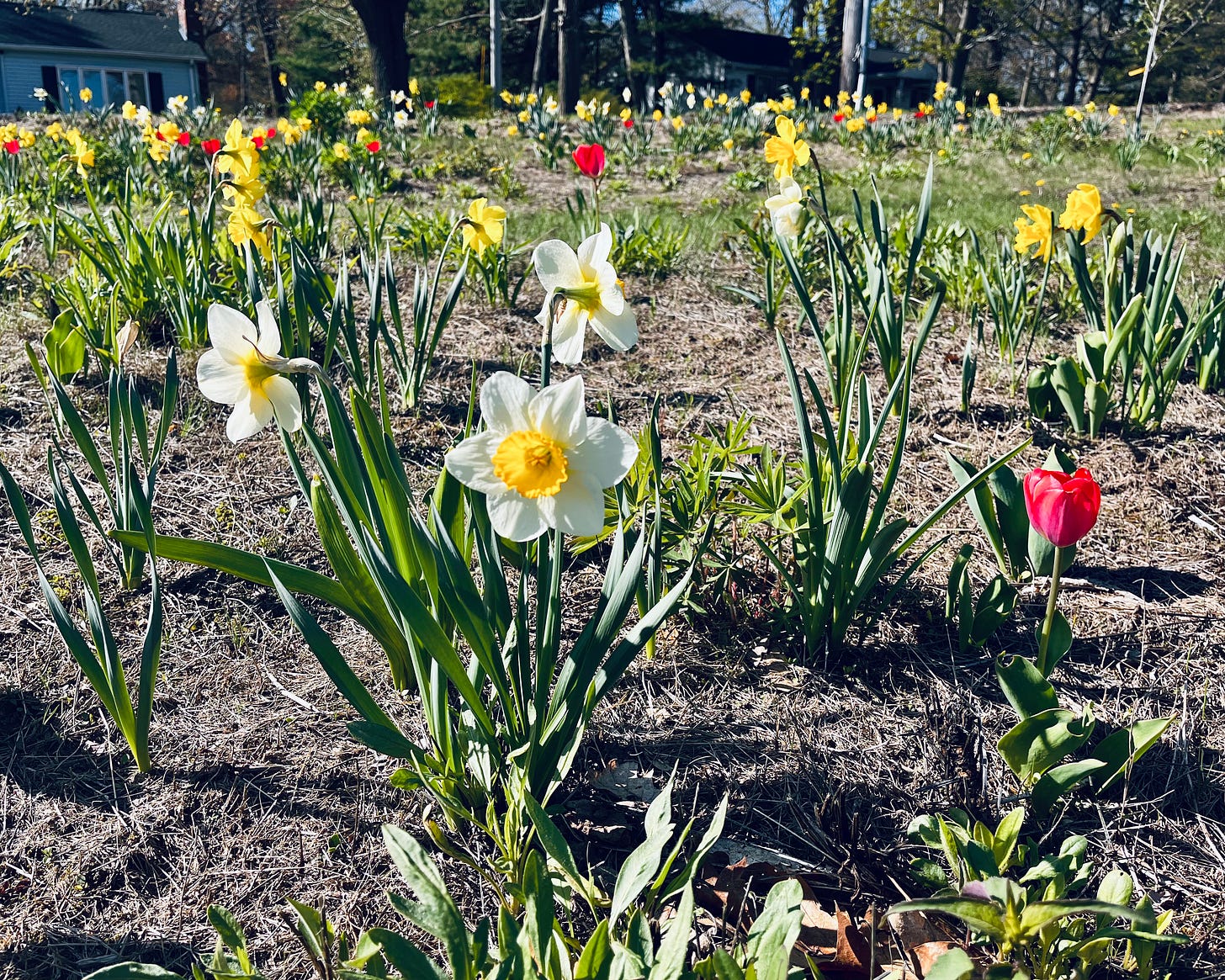Lessons Learned
Everything is clear in retrospect
Classical Roots is a free weekly newsletter. If you want to support the cause, the best way you can help us is to spread the word.
Monty Don has written more than a dozen books about the history, practice, and technique of gardening. Combine this with his many years as the lead presenter of BBC’s Gardeners’ World, and his experience in the field is probably more extensive than that of anyone alive. In a recent podcast, the interviewer asked Don to narrow all that knowledge down to a single, most important piece of advice. Without a second’s hesitation, he replied: “You become a real gardener the moment you start to make mistakes.”
Of course, the subtext is that you need to learn from the mistakes: to become aware that they are the most valuable learning moments. To be able to look at a plant and say “that doesn’t belong there,” and move it or compost it right away, was a state of mind that stayed beyond me for years. But now that I’ve stopped treating all of my past decisions as sacred, and become more willing to call a spade a spade when it comes to my errors, I seem to be passing into new and better territory. It’s hard to allow myself to get to that space because money is involved—either mine, when it comes to my home garden or, in the case of Classical Roots, the school’s. I’m not a miser, but I’m no spendthrift either, and wasting any sort of money feels wrong. Yet gardens are always changing: designing them is like doing interior design where the furniture gets slowly bigger over the years, and where the weather affects the upholstery’s color. Adaptation is part of the game, and last year’s success can quickly become this year’s problem. You have to keep moving and keep learning, because gardens are never finished.
Here are some recent lessons I’ve learned.
Spring bulb pots shouldn’t be planted late. Last fall, Classical Roots bought a few dozen irises, daffodils, muscari, and tulips to make spring displays. The idea was to “lasagne plant” these bulbs, layer by layer, in pots full of dry potting soil so they would bloom in sequence come spring. The design works in principle—but not if you wait too long to plant them. Worried that they would rot over the winter, I waited until March to pot them up. The result has been bulbs that were slow to take root, and have now sprouted in a confused riot instead of the stately parade I’d intended. Yet the blossoms will still be pretty, and the bulbs can all be transferred into the orchard or some other in-ground spot once they’ve gone over, so net losses are really zero. And now I’ve learned the value of good timing.
Ponds are wily beasts. The wildlife pond at CCA is coming along nicely, but bringing it to a stable state hasn’t been easy. I should have known that restoring this modest little body of water would have been trickier in practice than it seemed in principle, but then, I’d never tried. The liner has given us endless trouble, bubbling up relentlessly and needing to be weighed down again. For most of the winter, it looked like a disaster—a rude, soggy hole where before there had been nothing but a few unassuming grasses ankle-deep in muck. The lessons learned here are many, but the first is that you need to fill your pond most of the way before you bury the edges of the liner, which will otherwise trap air underneath, and that a fence makes a big difference when it comes to making a place look inviting and intentional. Frost said that good fences make good neighbors. I’d add that they also make good gardens.
Don’t forget to divide. Five years ago, the graduating class of 2020 planted a few “Stella D'oro” daylilies and a handful of catmints outside CCA’s USLR entrance. They’ve bloomed steadily enough, but that flank of the building is a large, long line, and the effect has always been underwhelming. I left it like this for years, not wanting to splurge on the necessary numbers to do a block planting scheme that would give the area a sense of fullness. But, this spring, I was dividing a bunch of “Autumn Joy” sedum and realized I had so many I could bring some to school. When I did so, the natural place to plant them turned out to be the USLR entrance and, as I hacked them up to make greater numbers, I realized that—of course—both the Stella D’oros and the catmints can be multiplied by division as well. The students and I made light work of it and, in a single lunch period, ended up with dozens of plants in a lovely block planting scheme. And I felt like a blockhead for not thinking of it earlier. The lesson learned there is not to ignore the wealth of what you already have.
If you enjoy what you’re reading here and want to support us, why not subscribe? It’s free to all and you’ll get access to our weekly posts, as well as a weekly subscriber-exclusive chat where we brag about our gardens and beg for advice. It’s the best way to support us.
Also: Tell me what you think! Your comments are part of what makes this program worth doing and this newsletter worth writing. If you have thoughts, advice, questions, or enthusiasm, let me know! Others are waiting to join the conversation.




Thanks for the update. Love the pics of the spring flowers. Happy gardening.